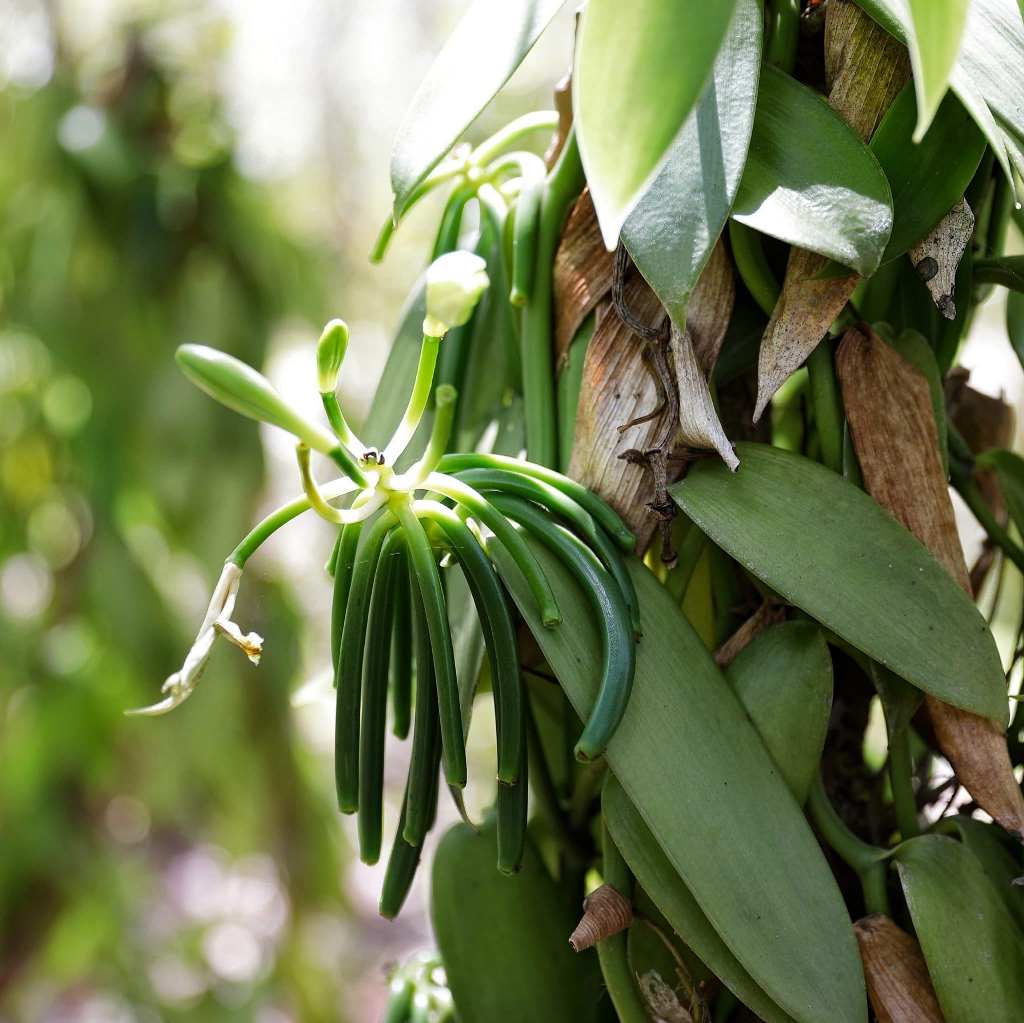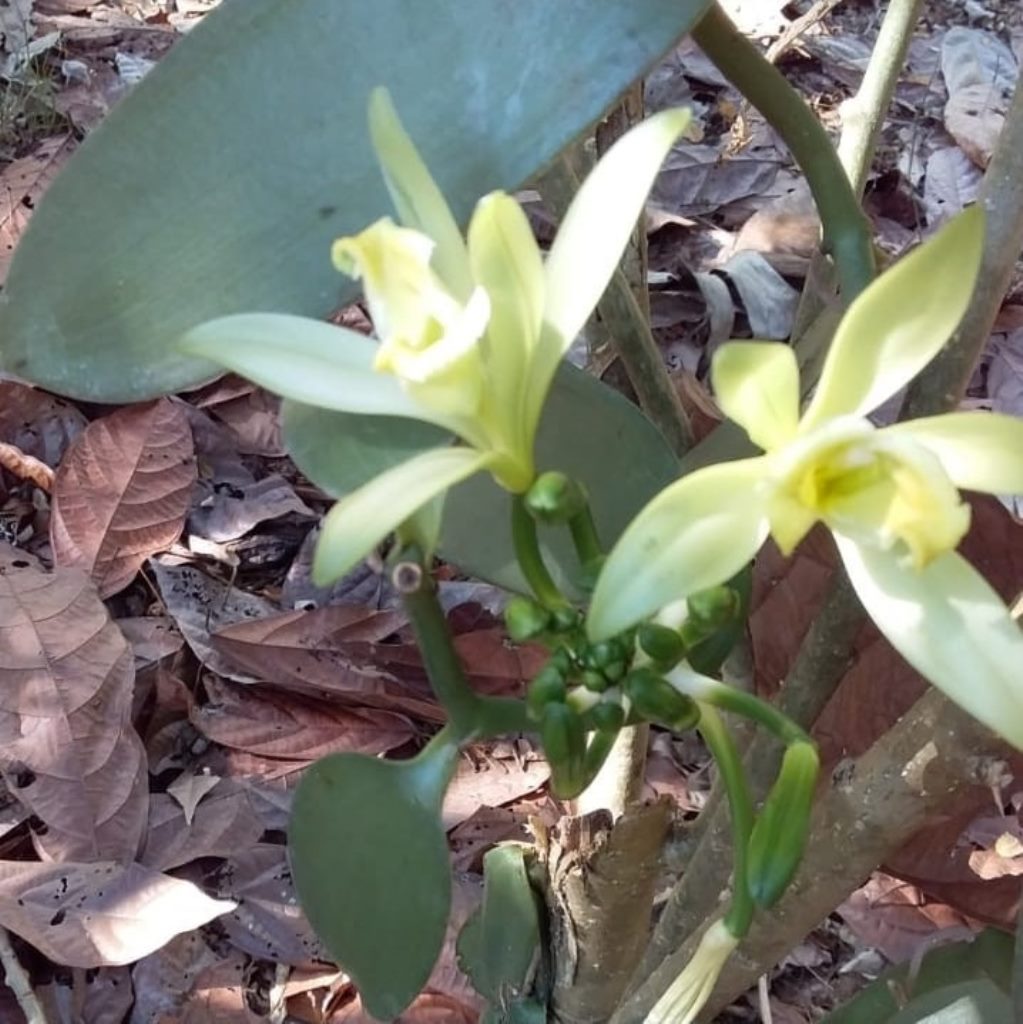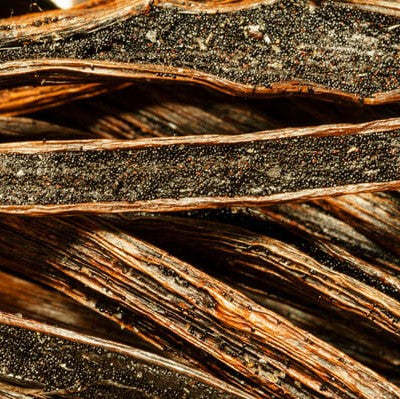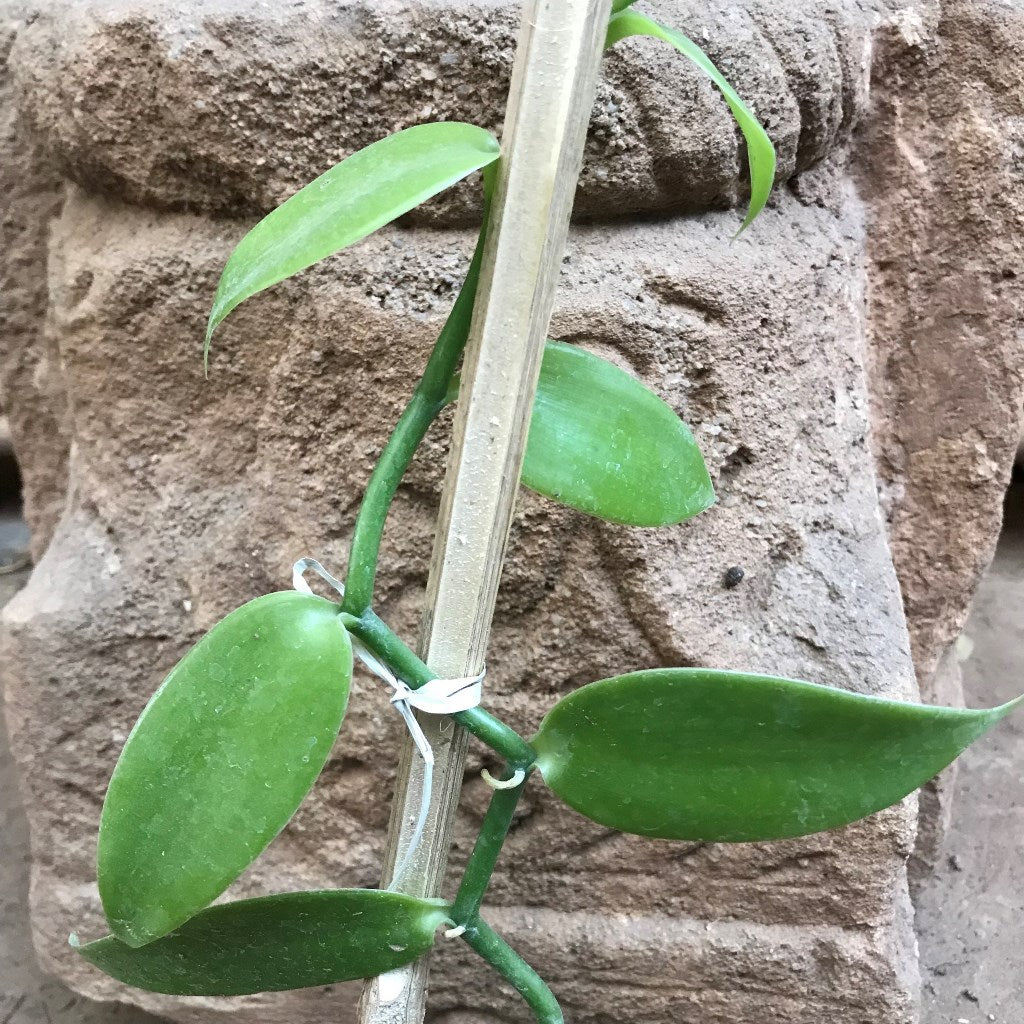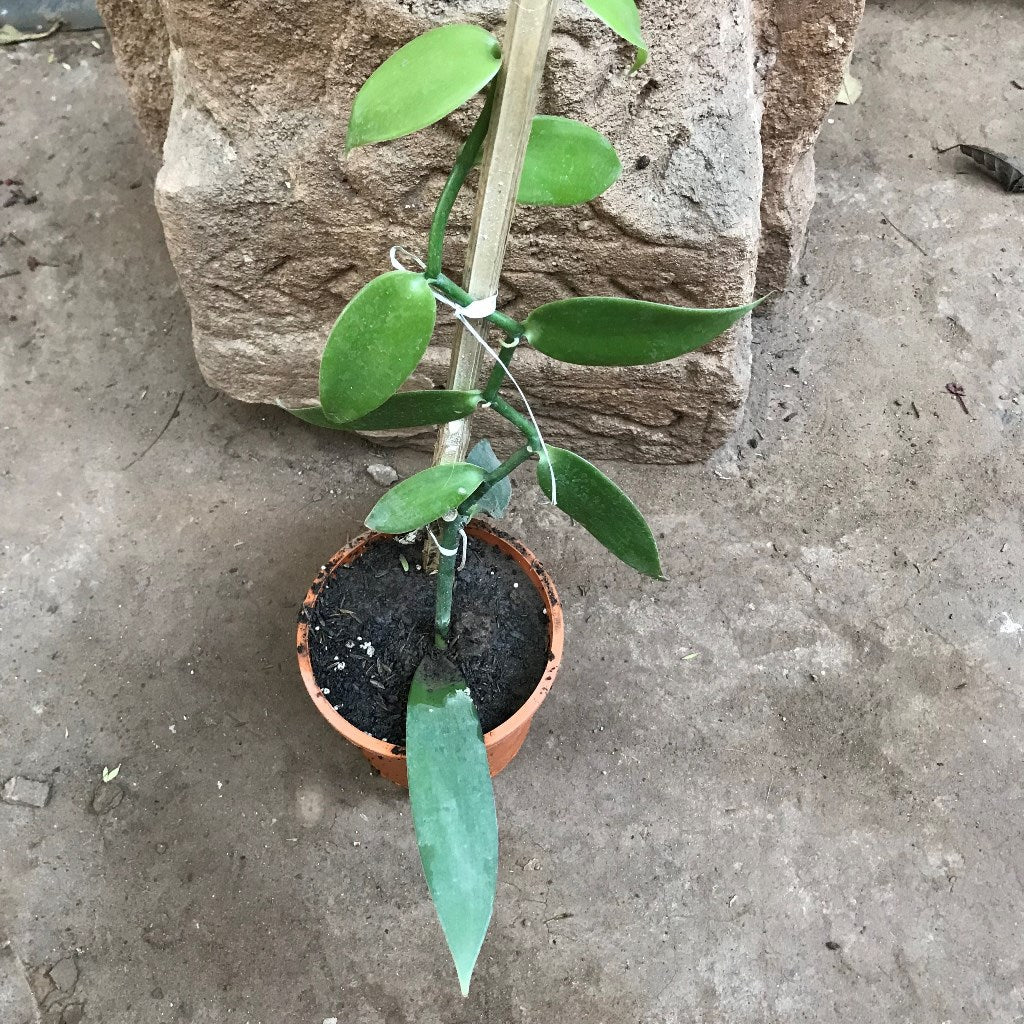Vanilla Planifolia
Family
Orchidaceae
Origin
Mexico, Central America
Description
Vanilla planifolia, commonly called vanilla, is a terrestrial or epiphytic orchid vine. In its native habitat, it may grow to as much as 50-75' tall over time, but as an indoor plant it grows much shorter.
Blooms are a creamy green color and have a pungent scent and appear on flowering spikes that emerge at the leaf axis along the stems and many blooms will emerge from this spike over a period of weeks, usually one at a time and each flower lasts only one day. The pods form in bean-like clusters. Because the vanilla bean plant is a slow-growing vine, it needs a stake or trellis to climb on.
Natural vanilla flavor comes from the cured seed pods of this orchid. Medicinally, vanilla is used in the treatment of fevers, spasms, and caries
Environment
Vanilla prefers a semi-shade position. It makes a good under storey plant. It can be grown in a wide range of soils such as sandy loam, heavy clayey loam. Light medium sandy loam soil rich in organic matter, and with adequate drainage, is suitable for its cultivation.
Plants that are grown in a container need a support and the vine needs to reach a height of 3-5 feet. Using a clay pot of 12 inches or more will give your orchid size, stability and also a healthy root system. Be sure to have excellent drainage with a porous potting mix and drainage hole in the bottom of the pot.
Vanilla orchids benefit from regular applications of fertilizer. A balanced plant fertilizer is recommended using a dilute solution at every other watering during the summer months. Even a constant fertilizer regime (used with each watering) with dilute levels of nutrients can improve growth. Be sure to occasionally leach the potting media with clear water to avoid fertilizer salt build-up.
Landscape Uses
Ideal & a very useful herb to be grown in the garden.

